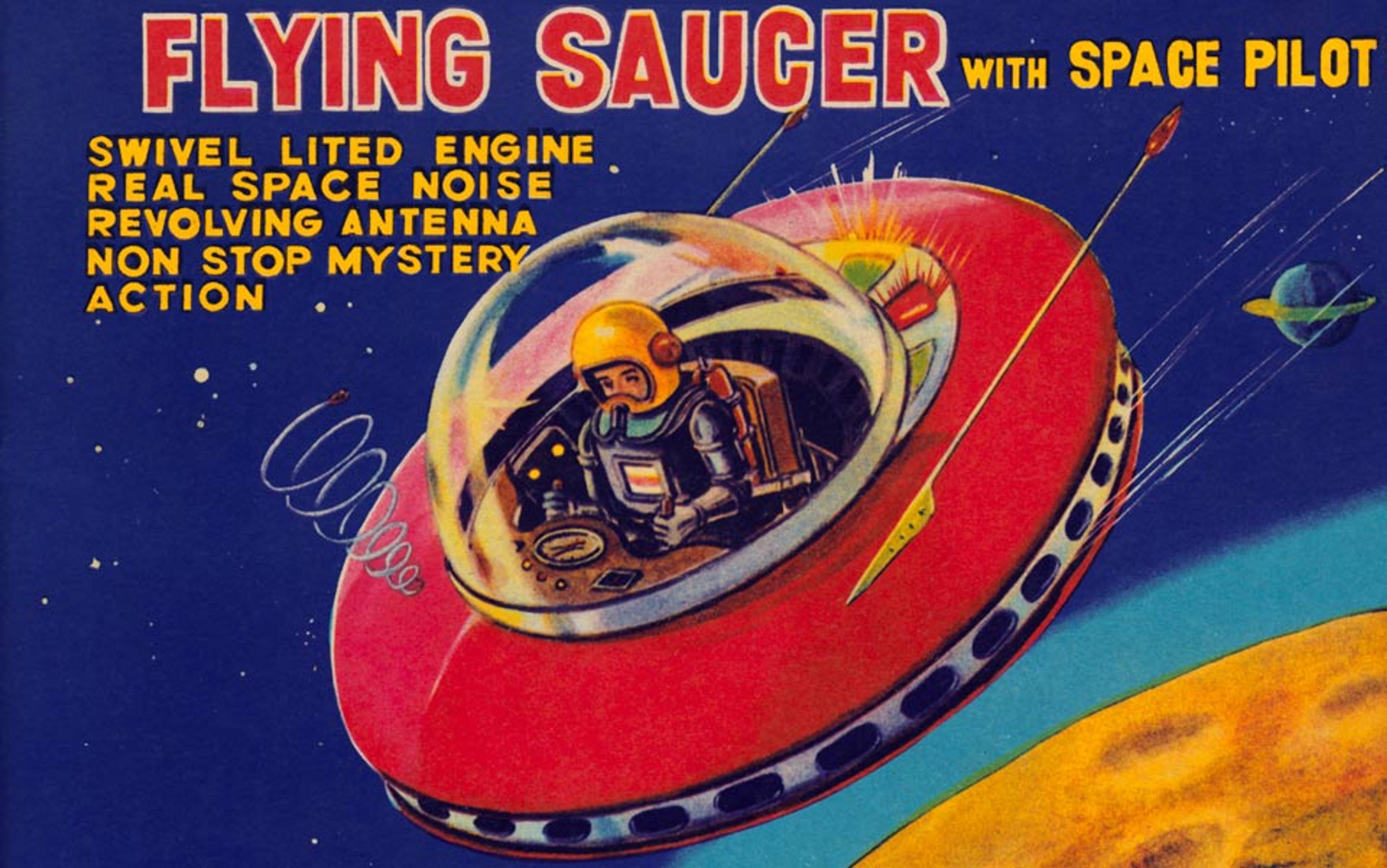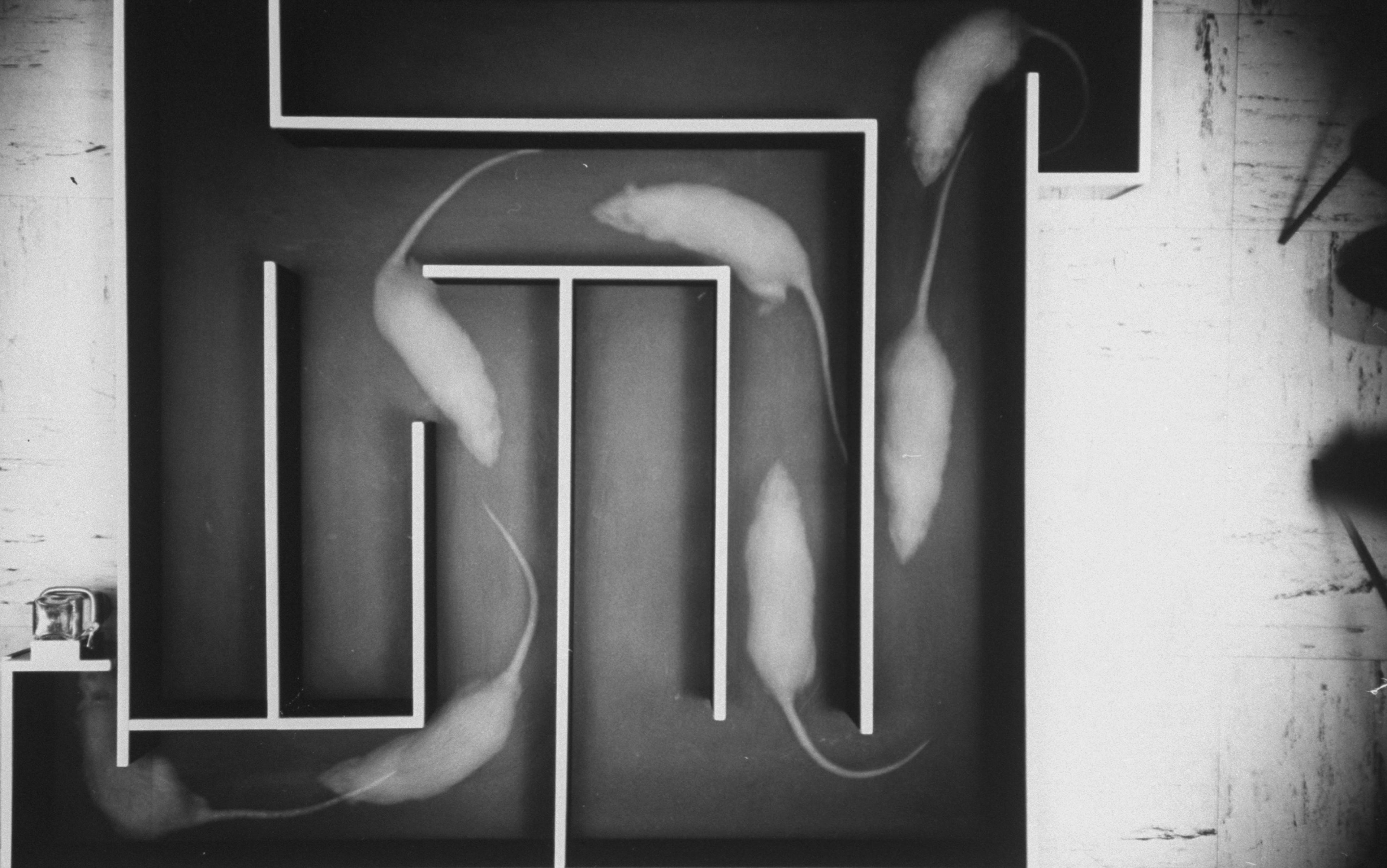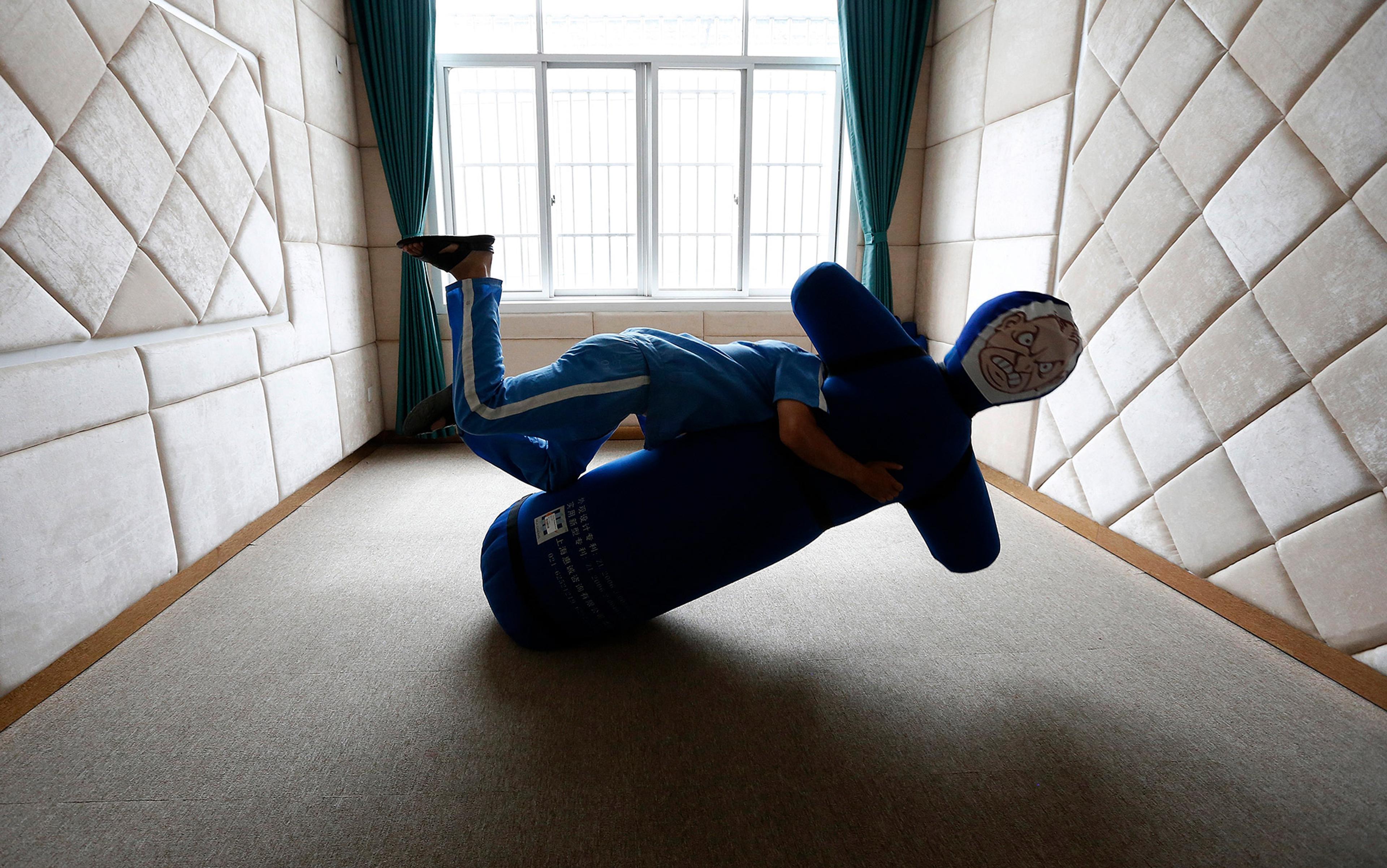In 1992, Sheila (a pseudonym) sought the help of a prominent psychiatrist. Since the death of her mother in 1984, she had regularly found herself angry, sad and irritable. She was also experiencing terrifying nightmares: she would be unable to move, her body felt like it was vibrating, and she had dreams that someone or something was controlling her body. In one dream in particular, Sheila’s house filled with a high-pitched noise and flashing lights. Then, she saw several short, thin-limbed beings covered in silver walking down the hallway toward her bedroom.
At first, Sheila asked her pastor for a psychotherapy referral. Unhappy with the therapist, she went to see a psychiatrist. By the end of 1989, Sheila was still dreaming about the prowlers, whom she now perceived as aggressive and hostile. Over the next two years, she had more than 20 appointments with two more doctors, who treated her using hypnosis. She was given anti-anxiety and antidepressant medications. Under hypnosis, more details emerged about her dream experiences. She recalled seeing a skeleton-like face, a ‘curling iron’ with a handle and a drill-like tip, and she recalled being stretched out and tied down with rubber tubing. As time went on, Sheila began to consider the possibility that her recollections were not of dreams but of real events.
At some point in her treatment, the subject of UFOs came up. After a CBS television miniseries called Intruders (1992) that portrayed cases of alleged abduction of human beings by aliens had aired, a friend convinced Sheila she needed to explore that possibility more intensively and suggested she contact John Mack. A Pulitzer Prize-winning psychiatrist and professor at Harvard Medical School, Mack had recently begun working with individuals who believed they might have been taken and experimented on by extraterrestrials. Mack used hypnotic regression – a technique designed to recover lost memories – to help Sheila find out more about her past. The method seemed to work, and it confirmed what had been suspected: she was having alien encounters. Moreover, she discovered that she had been having visitations in her home since before the age of six, and that both Sheila’s sister and daughter had also been having strange encounters. It all left her feeling violated, terrified that she was unable to protect her family, and overcome with dread that ‘they’ would return.
Sheila was not alone in her disturbing experiences and her search for answers. By the early 1990s, numerous individuals had been coming forward in alarming numbers to say they feared they had been taken against their will by aliens. One survey published in 1992 found that perhaps as many as one out of every 50 adults in the United States had had such encounters. Later that year, MIT held an academic conference to discuss the phenomenon. Books on the subject made the bestseller list, cases were made into screenplays, and self-professed abductees made appearances on television talk shows.
Alien abduction sparked not only interest but controversy – and on multiple fronts. The claims of witnesses tested the limits of how far society should respect the testimony and beliefs of others. Questions were raised about just how reliable personal memories were. And academics debated which experts and which methods were best suited to determine the truth.
Why did the phenomenon of alien abduction suddenly disappear from the list of popular concerns?
Sheila’s ordeal followed three decades of reports and public fascination in the US with people being ‘kidnapped by UFOs’, as one PBS show put it. Since the first sightings of ‘flying saucers’ in 1947, individuals had come forward to say they had had encounters with the occupants of unidentified flying objects. Throughout the 1950s and the early ’60s, most reported that their experiences had been pleasant, even spiritually fulfilling. But over the course of the 1960s and ’70s, an increasing number of cases emerged in which witnesses claimed to have been forcibly taken by the visitors. And then, at the start of the 21st century, interest in the phenomenon suddenly all but disappeared. To be sure, individuals have continued to claim having these fraught experiences since then. But mainstream US media and the reading public moved on from alien abductions. Even now, after revelations reported in The New York Times in 2017 about a secret government UFO programme inspired a revival of interest in unidentified flying objects, alien abduction has yet to claim a place alongside widely publicised sightings by military pilots, videos of odd-moving aircraft, the supposed mummified remains of extraterrestrials and drone scares.
At their height in the 1990s, stories of alien abduction proved so compelling that they inspired a major US television show. The X-Files, which first appeared in 1993, offered viewers an engaging fictional account of how extraterrestrials, conspiring with government officials, were insidiously victimising humans. By 2002, however, the series that had been ‘must-watch’ TV ended its original run (two revival seasons were filmed in 2016 and 2018), just as alien abduction began losing its public visibility. Why did this extraordinary phenomenon that challenges commonsense certainties about the real world suddenly disappear from the list of popular concerns? The answer lies in who ultimately got to decide what was and what wasn’t true about alien abduction, and how they managed to not so much solve its riddle as reconcile themselves with the phenomenon.
Debate over the authenticity of paranormal phenomena is hardly new. Historically, authorities of various kinds have been called upon to decide on episodes and cases. In much of 16th- and 17th-century Europe and the New World, for instance, the Inquisition often determined whether the sickness or death of livestock or a person had a supernatural cause, and whether someone accused was in fact a witch or not. In the 18th century, the Habsburg empress Maria Theresa turned to physicians to evaluate if reports of vampires in the empire had natural explanations. In 1784, France’s King Louis XVI appointed two expert commissions that included astronomers, chemists and doctors to conduct experiments to establish if the phenomenon of mesmerism was due to a mysterious, invisible fluid or simply the product of the fevered imaginations of the easily influenced. And in 19th- and early 20th-century Britain and the US, a mix of researchers with backgrounds in psychology, philosophy, physics, philology, anthropology and stage magic investigated some of the age’s most prominent occult claims: mediumship, apparitions, haunted houses, clairvoyance, telepathy.
In all these instances, figures in positions of authority either moved to or were drawn into establishing some consensus truth about supernatural claims. Often, in the Western world at least, these authority figures came from the Church, the state or academia. In some cases, such as vampirism and mesmerism, officials recruited outside specialists to look into matters; in other cases, such as ghosts, researchers took it upon themselves to weigh in. As such, what defined ‘expertise’ in the extramundane and uncanny was not always obvious, opening up a veritable grey market for self-proclaimed specialists.
Witch hunts of various kinds have continued to take place worldwide into the 21st century
No matter how factfinders came to initiate their investigations, the results of their work did little to discourage popular belief in the paranormal. Along with UFOs, popular interest in things like astrology, mind control, spirits, extrasensory perception and cryptids has remained robust. The one prominent counterexample to the perseverance of paranormal belief in the Western world seems to be witchcraft. Over the course of the late 17th and 18th centuries, prosecutions of supposed witches declined, then ceased, in Europe and North America. Historians do not entirely agree on why this happened, but it is clear multiple factors contributed to the apparent decline of witchcraft. Growing support of scepticism among elites, legal and judicial reforms, the increased value placed on religious tolerance, and disenchantment with mass arrests and torture all helped curb the impetus, if not the appetite, for criminalising and prosecuting black magic. But it was a gradual, albeit punctuated, process.
And, in fact, a closer look reveals that witch hunts of various kinds have continued to take place worldwide into the 21st century. In the US, however, one particular case set in motion a series of events directly relevant to the rise of the alien abduction phenomenon. Beginning in 1983, law enforcement and parents accused supervisors and teachers at the McMartin Preschool in California of sexually abusing children in their care. In interviews with social workers and police, witnesses reported the abuse was organised as part of violent satanic rituals. Over the next decade, reports of so-called satanic ritual abuse emerged across the US as well as Canada, the UK, Australia, the Netherlands and Germany. In the McMartin and several other cases, some of the accused were criminally charged and put on trial. By the mid-1990s, however, courts threw out the charges in some of the most high-profile cases.
Initial responses to the allegations were outrage at the accused, but this did not last. Within a few years of the first allegations, journalists and social scientists began publishing critical assessments of the evidence, questioning the reliability of child witness testimony. They also drew critical attention to officials’ use of suggestive and aggressive interview techniques that steered answers and encouraged embellishments. Noting how both evangelicals and the tabloid press highlighted the roles of satanism and cult-like rituals in the cases, critics portrayed the wave of accusations as a modern-day ‘witch hunt’. By the mid-1990s, a consensus formed that the whole affair had been the product of a baseless moral panic that had exploited the vulnerabilities of children and parents. It is also true, however, that subsequent research about the prevalence of child sexual abuse has raised questions about whether this conclusion is too facile.
As a problem in social knowledge, the satanic ritual abuse episode posed some of the same challenges in social epistemology arising from reports of alien abduction at the time. Both raised real intellectual and ethical questions about the proper ways to acquire, evaluate and present the testimony of witnesses who may be apprehensive and vulnerable. Crime victim advocates were forced to consider whether there were limits to their faith in the accuracy of alleged victims. Case workers were left wondering how to balance the competing roles of investigator and caregiver.
The heart of the matter is how can we believe the seemingly incredible? In the case of satanic ritual abuse claims, this was ultimately settled – at least to the satisfaction of most observers – by the courts. Criminal justice assumed the role of the appropriate social epistemologist. This recourse to legal authority, however, was not possible in the case of alien abduction, since the alleged perpetrators were literally beyond the reach of the justice system. So how did alien abduction go from being an extraordinary experience that many believed was frighteningly common to one widely perceived to be a settled matter, something no longer warranting concerted attention?
Researchers used the debate over alien abduction to demonstrate the value of their methods and professions
As in the satanic ritual abuse scare, psychologists, psychotherapists and social workers played a vital role in both legitimating and marginalising alien abductions. Their methods – relying on interview, dialogue, interpretation, diagnostic testing, therapeutic suggestion – played a direct role in how abductees and their advocates reported paranormal experiences. In 1963, in the first and most prominent alien abduction case in the US, the couple Betty and Barney Hill turned to a psychiatrist for help in making sense of their persistent distress about their mutual memory loss during a car trip two years earlier, something they eventually came to see as an instance of alien abduction. In the 1960s, James Harder, professor of engineering at the University of California, Berkeley, and R Leo Sprinkle, a counsellor at the University of Wyoming, became the first experts to rely on hypnosis to aid alleged victims of alien abduction in regaining access to lost memories of their experiences. With a succession of UFO investigators subsequently adopting what became known as hypnotic regression, the technique was commonplace throughout the UFO scene in the 1970s and ’80s. By the early 1990s, abductees were regularly consulting with psychotherapists, psychiatrists, hypnotists, social workers and self-appointed consultants who not only sought to discover the intentions of the inscrutable beings but also offered support and counselling to witnesses.

The psychiatrist Benjamin Simon putting Barney and Betty Hill under a trance for hypnotic regression. Photo by Alamy

Artist’s impression of aliens as described by Betty and Barney Hill under hypnosis. Photo by Alamy
During the 1990s, behavioural scientists and other mental health professionals also took the lead in expressing reservations about how abductee consultants were handling claims. The former came relatively late to the study of the phenomenon but, when they arrived, they comprised almost exclusively of experimental psychologists, psychotherapists and psychiatrists. The first discussions of the topic of abduction from this more sceptical cohort of researchers came in 1989, with debate being at its most robust from the mid-1990s until around 2000. To many in this circle, the abduction phenomenon represented a worrisome challenge to research and treatment integrity. But they also used the debate over alien abduction as an opportunity to demonstrate the value of their methods and professions.
This was hardly a new form of intervention for those working in the psychological sciences and medicine. In the 19th and early 20th centuries, many psychiatrists and psychoanalysts took on the task of debunking supernatural experiences and beliefs, placing themselves at the front of the campaign to combat what they considered to be backward superstitions. As vocal advocates of social reform, and increasingly drawn to secular and biological explanations, those making it their profession to treat disordered minds saw their field as the first line of defence against what they deemed to be irrational claims. Visions of heaven, encounters with saints and demons, visits from deceased loved ones, suspicions of magical influence: these, specialists argued, were just products of ignorance and confused minds.
In the 1980s and ’90s, some prominent academics and practising therapists similarly thought tales of alien abduction had mundane explanations that were being overlooked by overeager ufologists. Not surprisingly, those involved in clinical work with patients often saw a pathology at work. They tended to agree with George Ganaway, then assistant professor of psychiatry at Emory University in Atlanta, that the alien abduction experience was actually a syndrome ‘of the dissociative kind’, one rooted in the same kind of fantasy-proneness and high suggestibility found in those presenting symptoms of what was then called multiple personality disorder, or reporting satanic ritual abuse.
Led by a group of cognitive psychologists, another group took the view that abductees were unintentionally fabricating their experiences. To make their case, they turned to the studies demonstrating the prevalence of deception and confabulation. Indeed, US psychology had been taken with the problem of deception since their 19th-century investigations into spiritual mediumship. By the 1960s, psychologists were regularly employing deception in their experiments to work around the presumed deceptions and self-deceptions of their subjects. Deception became something neither immoral nor pathological but quite normal.
The recollections of abductees, it was argued, were false memories encouraged by abduction consultants
At the same time, the American Medical Association (AMA) was expressing its doubts about the therapeutic and forensic value of information gained through techniques of memory recovery. Already in a resolution adopted in 1984, the AMA’s Council on Scientific Affairs criticised the scientific status of ‘refreshing recollection’ using hypnosis, stating that ‘recollections obtained during hypnosis can involve confabulations and pseudomemories and not only fail to be more accurate, but actually appear to be less reliable than nonhypnotic recall.’ In June 1994, that same council followed up with a statement about its distrust of recovered memories of child sexual abuse, declaring them ‘to be of uncertain authenticity, which should be subject to external verification. The use of recovered memories is fraught with problems of potential misapplication. Most controversial are those memories that surface only in therapy …’ The therapeutic setting, it was believed, worked with a highly subjective idea of truth.
Starting in 1993, teams of experimental psychologists published studies said to show that alien abduction was part of a family of new phenomena resulting from unacknowledged social-psychological influences and commonplace mental fallibilities. Caught up in what the literary critic Frederick Crews dubbed ‘the memory wars’ of the 1990s, alien abduction found a place alongside satanic ritual abuse, recovered memories and multiple personalities as something deemed scientifically spurious. Witnesses were not suspected of lying. Rather, the recollections of abductees, it was argued, were false memories encouraged by abduction consultants through leading questions in order to imaginatively relive ‘experiences’. As such, the experiences of abductees could be seen as embellishments after the fact, with vulnerable individuals filling gaps in their memories with details lifted from popular media and abduction advisers.
A key moment came in June 1994, when Harvard Medical School formed a committee to investigate Mack’s work with abductees. In its final report issued around a year later, the committee fell short of accusing Mack of misconduct, and he retained his status as ‘a member in good standing’ in the faculty. It did, however, criticise him for several shortcomings in his methods, the most serious being his neglecting to distinguish between abductees he was treating as research subjects and those who were his patients. Within a few years after this, alien abduction was no longer drawing the mainstream attention it had had. It was, once again, consigned to the scientific fringe.
As had been the case with satanic ritual abuse, the backlash from behavioural scientists and clinicians had a palpable impact on public opinion. This was also evident at the box office, as filmmakers cooled to the idea of adapting abductee stories for the big screen. The conclusion, then, would seem to be that researchers and practising clinicians stepped in to debunk the phenomenon and succeeded in undermining its credibility.
Law demands clear-cut resolutions. The psychological sciences are far more accommodating to ambiguity
But, in fact, most behavioural scientists and treatment specialists who took positions on the matter did not categorically repudiate alien abduction. Instead, they tended to see it in clinical terms, as a phenomenon evolving out of therapeutic-like settings and encounters, where the process was not about reconstructing an accurate picture of one’s past but rather about developing personally believable and productive stories about that past. Even the Harvard committee investigating Mack made it clear that members were not in the business of deciding or assuming whether alien abductions were taking place or not. As they put it, they were not challenging Mack’s right to adopt any particular set of hypotheses about the phenomenon. ‘Neither did we attempt to determine whether his hypotheses are correct. We focused instead on the quality of his clinical and scientific methods and the way he has been conducting his work on “alien abduction” as a physician and scholar …’ For the Harvard committee at least, its expressed concern was not about the ontological claims being made about alien abduction but rather the ethical treatment of those making such claims.
In satanic ritual abuse cases, courts ultimately had to be definitive about the truth of allegations. When it came to alien abduction, however, the Harvard committee, academic researchers, therapists and the court of public opinion were under no such obligation. As such, the phenomenon could be treated as many things at once: a mental aberration, a sleep disorder, a mystical experience, a concocted fiction, an expression of cultural anxieties, an actual encounter with extraterrestrials. Law demands clear-cut resolutions. The psychological sciences, however, are far more accommodating to ambiguity.
In a paradoxical way, alien abduction was afforded a certain measure of legitimacy since it avoided legal authority and fell to the psychologists. The experience of abductees was real in that it was real enough to the person who believed it. So the phenomenon was effectively relegated to the status of a devoutly held belief, not unlike a spiritual conviction or idea. Viewed as a deeply felt personal belief, many people saw no problem in at least respecting reports of alien abduction as yet another perspective on reality. In this way, the alien abduction phenomenon was made relatively harmless. Now, at a time when talk of unidentified anomalous phenomena and retrievals of crashed spaceships and ‘non-human biologics’ has made its way into the world of congressional hearings, it remains to be seen whether alien abduction will stay in its place.






